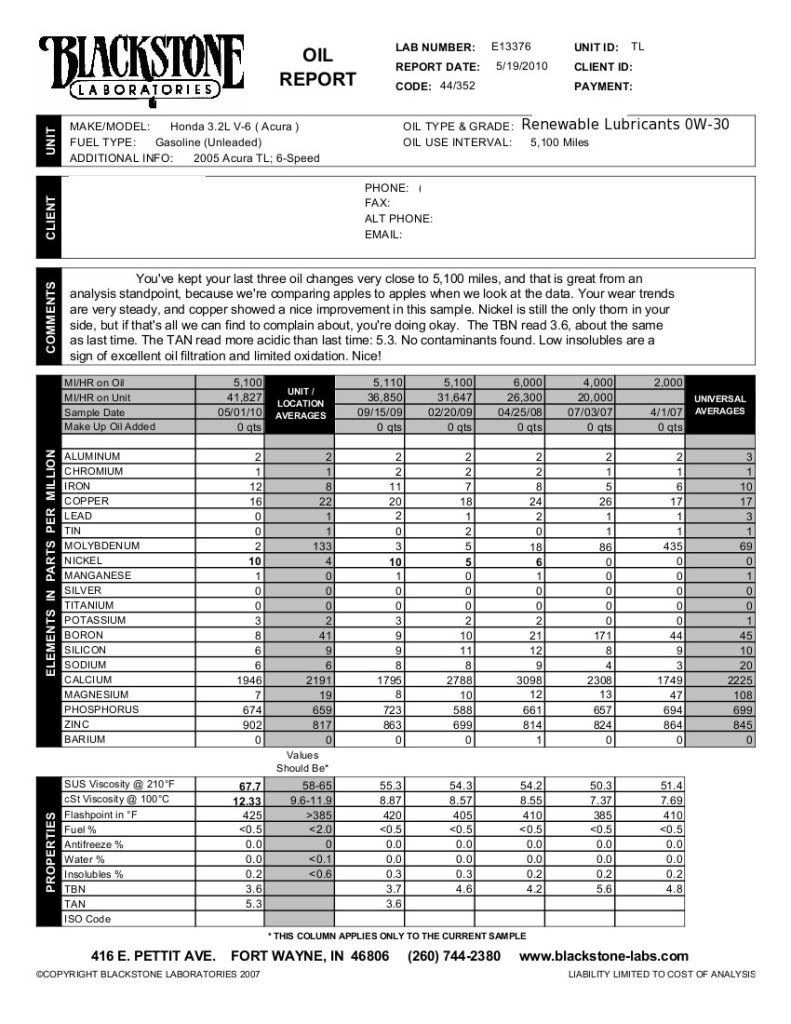This is, arguably, as close as one can get to controlled study, in a "real" world environment. One driver, similar ambient temperatures, comparable mileage and driving conditions, at least 2 runs for most brands of oils.
Those UOAs compare results from some of the "more" interesting oils under scrutiny on this forum.
The intent behind this post is to seek comments and suggestions given rather interesting results. Note that RLI results include both TAN and TBN.
Thank you in advance.
Logistics:
From left to right, on the BlackStone Lab report:
RLI 0W-30, RLI 0W-20, Amsoil 0W-20, Amsoil 0W-20, Amsoil XL 5W-20, Havoline 5W-20
Last run did include Techron fuel system concentrates with just about each tank of gas.
Oil Filters used:
RLI and Amsoil 0W-20 runs were filtered by Mobil-1 104 filters,
Amsoil XL was filtered by Wix ,
Havoline - filtech OEM

Those UOAs compare results from some of the "more" interesting oils under scrutiny on this forum.
The intent behind this post is to seek comments and suggestions given rather interesting results. Note that RLI results include both TAN and TBN.
Thank you in advance.
Logistics:
From left to right, on the BlackStone Lab report:
RLI 0W-30, RLI 0W-20, Amsoil 0W-20, Amsoil 0W-20, Amsoil XL 5W-20, Havoline 5W-20
Last run did include Techron fuel system concentrates with just about each tank of gas.
Oil Filters used:
RLI and Amsoil 0W-20 runs were filtered by Mobil-1 104 filters,
Amsoil XL was filtered by Wix ,
Havoline - filtech OEM

